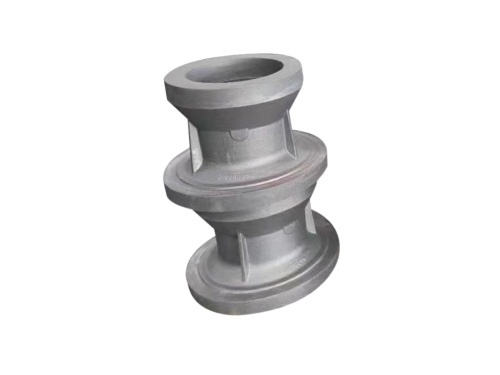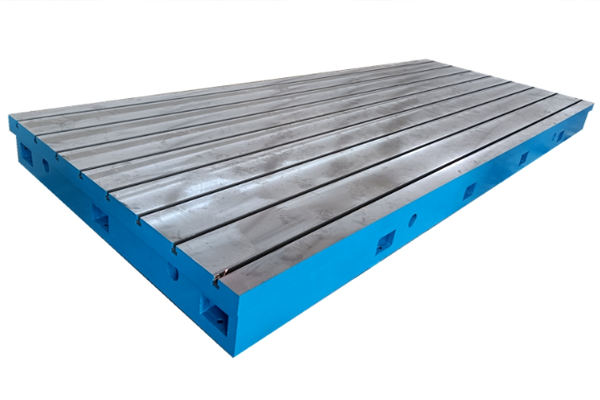Product Details
-
Cast iron platform flat series
-
Marble measuring tool
-
3D welding platform
-
Square box/bending plate
-
Series of cast iron flat ruler
-
V-frame series
-
Magnesium aluminum measuring tool
-
Skew instrument series
-
Plug ring gauge series
-
Machine tool pad iron series
-
Machine tool casting series
-
Counterweight iron series
-
Cast iron flooring
-
Ground rail series
-
Special wrench series
-
Other series
-
Machine tool inspection measuring tools
-
Haval Festival series
-
Valve series
-
Casting

Steel castings
Steel castings refer to parts made of cast steel,which have similar properties to cast iron but better strength than cast iron.Steel castings are prone to defects such as porosity and inaccurate angle positioning during the casting process,and may experience casing fracture during long-term use.
1.Advantages
One of the advantages of steel castings is the flexibility of design.Designers have a great deal of freedom in choosing the shape and size of castings,especially for parts with complex shapes and hollow cross-sections.Steel castings can be manufactured using the reliable process of core assembly.It is easy to form and change its shape,and the conversion speed from the design to the finished product is very fast,which is conducive to a suitable speed for quotation response and shortened delivery time.The improved design of shape and quality,small stress concentration factors,and overall structural craftsmanship all reflect the flexibility and technological advantages of steel casting design:
1)The metallurgical manufacturing of steel castings has strong adaptability and variability,allowing for the selection of different chemical compositions and microstructure control,which is suitable for various engineering requirements;Mechanical properties and usability can be selected over a wide range through different heat treatment processes,with good welding and processing performance.
2)The isotropy of cast steel materials and the overall structural strength of cast steel parts improve the engineering excellence.Combined with the advantages of weight reduction design and short delivery time,it has a competitive advantage in terms of price and economy.
3)The weight of steel castings can vary greatly.The lighter ones can be fine investment castings weighing only a few tens of grams,while the weight of large steel castings can reach several tons,tens of tons,or even hundreds of tons.
2.Disadvantages
(1)Uneven organization.After injecting liquid metal into the mold,the first layer of liquid metal that comes into contact with the mold wall solidifies quickly into finer grains due to the rapid temperature drop.As the distance from the mold wall increases,the influence of the mold wall gradually weakens,and the crystal grows into parallel columnar crystals along the direction perpendicular to the mold wall.At the center of the casting,there is no significant directionality in heat dissipation,and it can freely grow in various directions until it comes into contact with each other,thus forming equiaxed crystal regions.It can be seen that the microstructure inside the casting is uneven,and generally speaking,the grains are relatively coarse.
(2)The organization is not dense.The crystallization of liquid metal occurs through branch growth,and the liquid metal between the branches solidifies.However,it is difficult for the metal liquid to completely fill the branches,resulting in a general lack of density in the castings.In addition,if the liquid metal injected into the mold shrinks in volume during cooling and solidification without sufficient replenishment,it can also form porosity or even shrinkage pores.Graphite in cast iron castings often appears in the form of larger flakes,spheres,or other shapes,and can also be seen as an underdense structure.
(3)The surface is rough.The surface is generally rough and cannot be compared to machined surfaces,and the shape is also complex.
 NEWS
NEWS
-
The main function of welding platforms
2022-09-08 05:40:39
-
Measures for maintenance and upkeep of the marking platform
2022-09-08 05:39:16
-
Reference plane inspection and application of cast iron platforms
2021-01-24 11:20:22
-
The centralized method and measurement inspection method for installing cast iro
2021-01-20 09:21:17
-
How to Reasonably Design Reinforced Ribs for Cast Iron Platforms
2021-01-19 09:51:22
 CONTACT
CONTACT
—— E-mail:326673342@qq.com
—— Tel/Fax:+86-0317-8383389
—— Phone:+86-18603177396
—— Address:Linzhuang, Haocun Town, Botou City, Hebei Province







